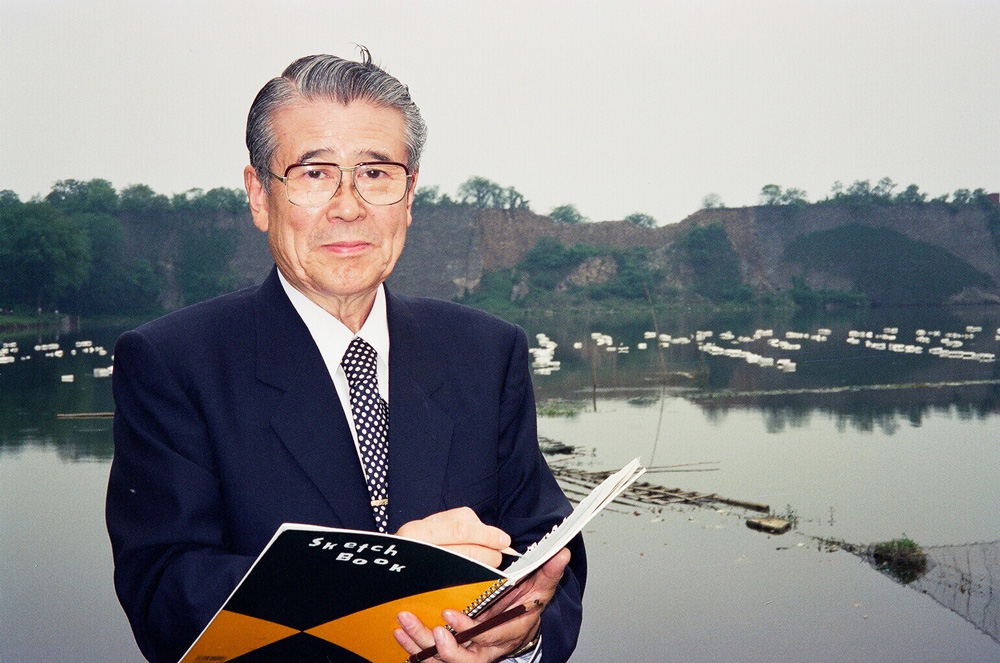
Ikuo Hirayama is the most celebrated contemporary artist working in the genre of Nihon-ga,or traditional Japanese painting, and his workson the Silk Road and on mankind’s outstanding cultural monuments have made his name well-knownfar beyond his native shores.
Born on a small island in the Inland Sea,Hirayama’s childhood years were almost idyllic,until the outbreak of World War II brought himface-to-face with a grimmer reality. While still aschoolboy, he was called up in 1945 to work at amunitions depot in Hiroshima, and he narrowlyescaped death when the atomic bomb was dropped.The aftereffects of the radiation sickness he sufferedwere to plague him throughout his early career.
It was this struggle with ill-health that led him todepict Buddhist themes in his painting, and theseworks not only brought him much public acclaimbut also sparked his interest in the Silk Road and theancient civilizations found there. Thus, from themid-1960s, Hirayama began almost annual pilgrim-ages to sites along the entire length of the Silk Road,from Turkey to the remote desert regions of China,sketching the people and scenes he encountered.
On these visits he was saddened by the state ofdisrepair of many of the ancient monuments, andthis fired his determination to help restore and preserve these treasures of civilization. Despite theheavy demands of his official position as the president of the Tokyo National University of Fine Artsand Music, he worked tirelessly for this cause, settingup organizations to save such sites as the ThousandBuddha Caves at Dunhuang, China, and the Buddhist complex at Angkor, Cambodia, even donatingthe money from sales of his paintings. His contributions in this field and to international culturalexchange in general have been recognized by severalgovernments.
He held prominent positions such as UNESCO Goodwill Ambassador, special adviser for cultural heritage, special appointed director of Tokyo National Museum, administrative director of foundation for cultural heritage and art research, and administrative director of Japan Art Academy Exhibition.
He died December 2, 2009 (in the twenty-one year of the Heisei era) at the age of 79.
Hirayama was born in Setoda-cho, Hiroshima Prefecture (present-day Onomichi City) on June 15, 1930. He studied at and graduated from the Department of Japanese Painting of the Tokyo School of Fine Arts. He entered the offices of Tokyo University of the Arts upon graduation from the Tokyo School of Fine Arts in 1952, and retired as president in 1995. He served again as the president of Tokyo University of the Arts from 2001 to 2005. He won an award for the first time in the at Inten fine arts exhibition promoted by Nihon Bijutsuin (Japan Art Institute) for his work “Ieji (Homeward Bound)” in 1953. He became a member of the Nihon Bijutsuin in 1964, where he served as the chairperson of the board of directors. He was awarded the Order of Cultural Merit in 1998.
He furthermore, served as a UNESCO goodwill ambassador and a special adviser in charge of world heritage; a specially-appointed executive director of the Tokyo National Museum, and a chairperson of the board of directors of the Foundation for Cultural Heritage and Art Research, which advocates Red Cross activities for cultural heritage.
Passed away on December 2, 2009 at the age of 79.





